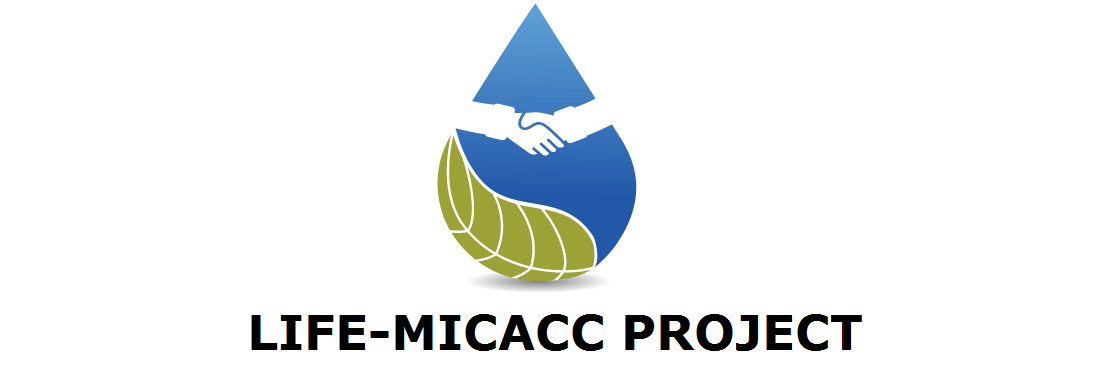During September and October 2020 the Ministry of Interior organized five press trips, with the aim of introducing the five pilot projects to the public at large, all within the framework of the LIFE-MICACC project. The overall goal of the project is to improve the resistance of the most vulnerable municipalities against climate change with implementing, testing and presenting innovative, effective, small scale and cost-efficient natural water retention measures (NWRMs). These water retention models provide possible solutions on how to mitigate the more frequently and unpredictably appearing weather extremities’ negative impacts on municipal level.
On the press conferences, the respective municipalities’ Mayor (Bátya, Püspökszilágy, Rákócziújfalu, Ruzsa, Tiszatarján), the project coordinator Ministry of Interior’s representatives, the experts of General Directorate of Water Management, the WWF Hungary’s expert and local stakeholders also gave a speech related to the importance of the completed NWRM.
On the press trips, each Mayor highlighted that the completed pilot project is an important milestone in the life of the settlement, which supports the local retention of water and the adaptation to climate change. Beyond creating new water habitats, improving the biodiversity of flora and fauna, the completed intervention created a new community space, a resting and excursion area in each settlement, providing a good example to be followed by nearby municipalities.
As stated at Rákócziújfalu by Dr. Mária KÁLLAI, Member of the Parliament, this type of attitude, cooperation, public involvement and natural water retention measures serves as an example to other smaller municipalities with similar challenges.
Dr. Miklós DUKAI, Deputy State Secretary for Municipal Affairs highlighted the importance and actuality of adaptation capability, which the Ministry of Interior already recognized in 2016, during the project planning phase, alongside the importance of water retention and local adaptation to climate change. Hungary is in a position where water loss is a constant problem, the importance of local water retention created the need of a shift from treating the water as a danger to treating it as a resource. He added that the long-term aim of the Ministry is to implement more national best practices, drawing the municipalities’ attention to the natural water retention measures, following the LIFE-MICACC project’s footsteps.
As Dr. Miklós DUKAI stated, besides the completed natural water retention measures, several other tangible results have been achieved: several completed municipal vulnerability assessments, a training material with the topic of climate change adaptation, an interactive e-learning material, an application and several informative and attitude-shaping events for municipalities. He highlighted that right now the partnership is working on an Adaptation Guide for municipalities, showing the whole process and individual steps to create NWRMs, and what to take into account from design through implementation to operation. The proposal package for the Hungarian Government will be an important deliverable product also, where recommendations – based on the project experiences – will be presented in order to improve the legal environment for NWRMs.
Dr. Róza SZÁMADÓ, Head of Department representing the Ministry of Interior, said that it makes her proud to look at the completed pilot sites. During the implementation it was important to create environmental and climate-friendly solutions, which can also improve the quality of life of local residents and farmers. She added that with her colleagues they are working on spreading the use of these innovative and close-to-nature solutions in Hungary and to implement as many similar developments as possible during the 2021-2027 EU budget.
From the General Directorate of Water Management Gábor KOLOSSVÁRY, Head of Department, and Dr. László BALATONYI, Head of Unit stated that according to their previous researches similar interventions could be carried out in nearly 1 000 Hungarian settlements. They also talked about the Municipal Water Management Program, which aims to create an integrated water management plan including the in- and outland waters of municipalities.
Klára KERPELY and Mátyás V. FARKAS, both from WWF Hungary, called the attention to two of the most crucial problems of our times, which can only be solved by planned adaptation: the climate change and the extreme degradation of biodiversity. They also highlighted the importance of people and nature living in harmony with each other.
About the listed achievements and the project’s progress more information can be found on the following website: https://vizmegtartomegoldasok.bm.hu/en
Photos from the press trips can be reached here:
Bátya: https://vizmegtartomegoldasok.bm.hu/en/gallery/image/61
Püspökszilágy: https://vizmegtartomegoldasok.bm.hu/en/gallery/image/31
Rákócziújfalu: https://vizmegtartomegoldasok.bm.hu/en/gallery/image/29
Ruzsa: https://vizmegtartomegoldasok.bm.hu/en/gallery/image/63
Tiszatarján: https://vizmegtartomegoldasok.bm.hu/en/gallery/image/47
More about the five completed natural water retention measures:
Bátya: an innovation in rainwater management
In Bátya, sudden downpours often flood some streets and cellars. The average annual rainfall in Bátya does not reach 550 mm, which is much less than necessary. Therefore, instead expanding water drainage, the municipality decided to collect the rainwater. The LIFE-MICACC Project diverted the collected rainwater to an old and earlier abandoned clay pit on the outskirts of the village. The result was a new, almost one hectare wetland habitat. The newly created small lake preserves Bátya’s valuable water resources for the drier season. The lake infiltrates water deep into the soil to recharge groundwater, improves the micro-climate through evaporation, supplies the flora with water and mitigates the effects of climate change. One shore is easily accessible and is therefore suitable for recreation. The other side is untouched and serves as a shelter for wildlife such as reptiles and birds nesting in the reeds. Native tree species such as black poplar, white willow, narrow-leaved ash and alder were planted around the lake together with local residents.
Püspökszilágy: slowing the flow to protect the settlement against flash floods
In Püspökszilágy, the village defended itself against the double trouble of droughts and floods. In particular, the Szilágyi Stream in the village is prone to flash flooding. LIFE-MICACC suggested a new solution, leaky wooden dams. The dams have already proven their worth during several thunderstorms this season. The emphasis was on slowing down the flow and preserving the water instead of draining it as quickly as possible. On the upper catchment of the stream above the village, international best-practice examples were used to build seven leaky wooden dams made of locally sourced logs on erosional gullies that join the Szilágyi. In the event of a thunderstorm, the water suddenly accumulates behind the log dams and the eroded soil washed away from the upper plough lands can be retained and the water released slowly. Moreover, four stone sediment traps were renovated. If enough small obstacles are made in enough areas, cumulatively they will decrease the flood peak and prevent flooding. In addition, further down along the stream a side-reservoir has been built in a wetland floodplain forest, which acts as a storm water buffer during a flood and also serves as a wetland during the drier summer months.
Rákócziújfalu: no inland water is wasted
In Rákócziújfalu, half way along the Tisza River, water management problems are arising that are typical to the Great Hungarian Plain. This region is the driest in the country because the annual number of sunny hours is high, and therefore the potential for evaporation exceeds the annual rainfall. However, in the spring, the inland water from snowmelt or rain that stays on the ground (inland waterlogging) often causes damage to agriculture. A water reservoir created from municipal investments now offers a solution to the dual problem of drought and inland waterlogging. The reservoir redirects the excess water that is normally released into the Tisza River during water-abundant spring periods into a drainage system to a freshwater habitat created in a low lying area instead. An adjustable sluice gate on the canal allows water to be retained in the canal, and mitigates drought along the canal further upstream. If there is no snow or rain due to climate change and the spring water abundance falls short, as happened this year, water can be supplied to the small natural reservoir from a nearby fishpond; or the water can be retained from the Tisza River if the water level is sufficiently high.
Ruzsa: wastewater is valuable
In Ruzsa, water has become a scarce resource. Drainage canals have been empty here for many years. The village faces the shortage of natural surface water resources and the sinking of the groundwater level. The situation is exacerbated by the increasingly warm and drier climate. Every drop of water counts. The average 150 m3 of treated greywater released by the sewage treatment plant, and the 10-20 m3/day of technological water (water used to rinse the system) flowing out of the new drinking water purification plant are both valuable resources. LIFE-MICACC found a solution to retain both water resources. The greywater resources are no longer allowed to flow into the canals and away from the settlement, but are collected into small lakes instead. After passing to a second basin they seep into the soil. In addition, a small drainage canal with three small wooden sluice gates are maintained so that if too much water appears in an unusually wet period, the water is retained in the canal and is allowed to inundate the pastures along the canal instead of being drained.
Tiszatarján: landscape management on the foreshore
Tiszatarján is closely connected to the Tisza River. After the regulation of the river, and due to the drainage of wetlands, the spread of arable farmland on the floodplains, the intensifying effect of drought, and the reduction of animal husbandry, floodplains were overrun by false indigo (Amorpha fruticose), an invasive shrub species. A few years ago, in cooperation with WWF-Hungary a sustainable floodplain management model was developed for Tiszatarján that would fight off the invasive plants. Grazing by Hungarian grey cattle and water buffalo on the floodplain prevents the return of the invasive shrubs. However, as a result of climate change, the lake system formed of clay pits that serve as a wetland habitat for the water buffaloes dried out. In order to increase the retained water, the pits have been extended with a new basin. Moreover, natural slopes were created on the shores to create better habitat for the grazing animals. A pier was built from where the visitors can observe water buffalos up close. The Water Buffalo Nature Trail will soon open.




